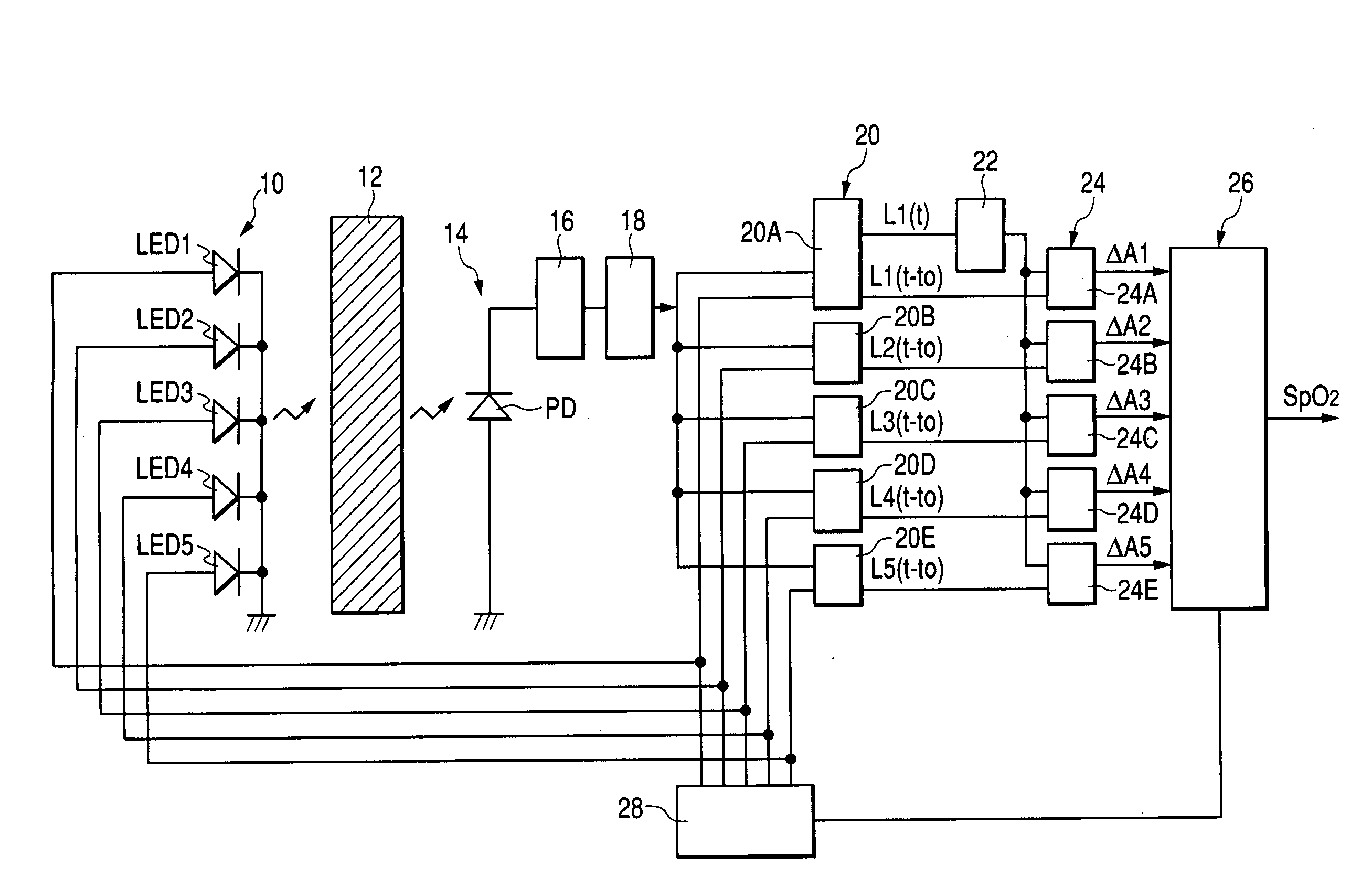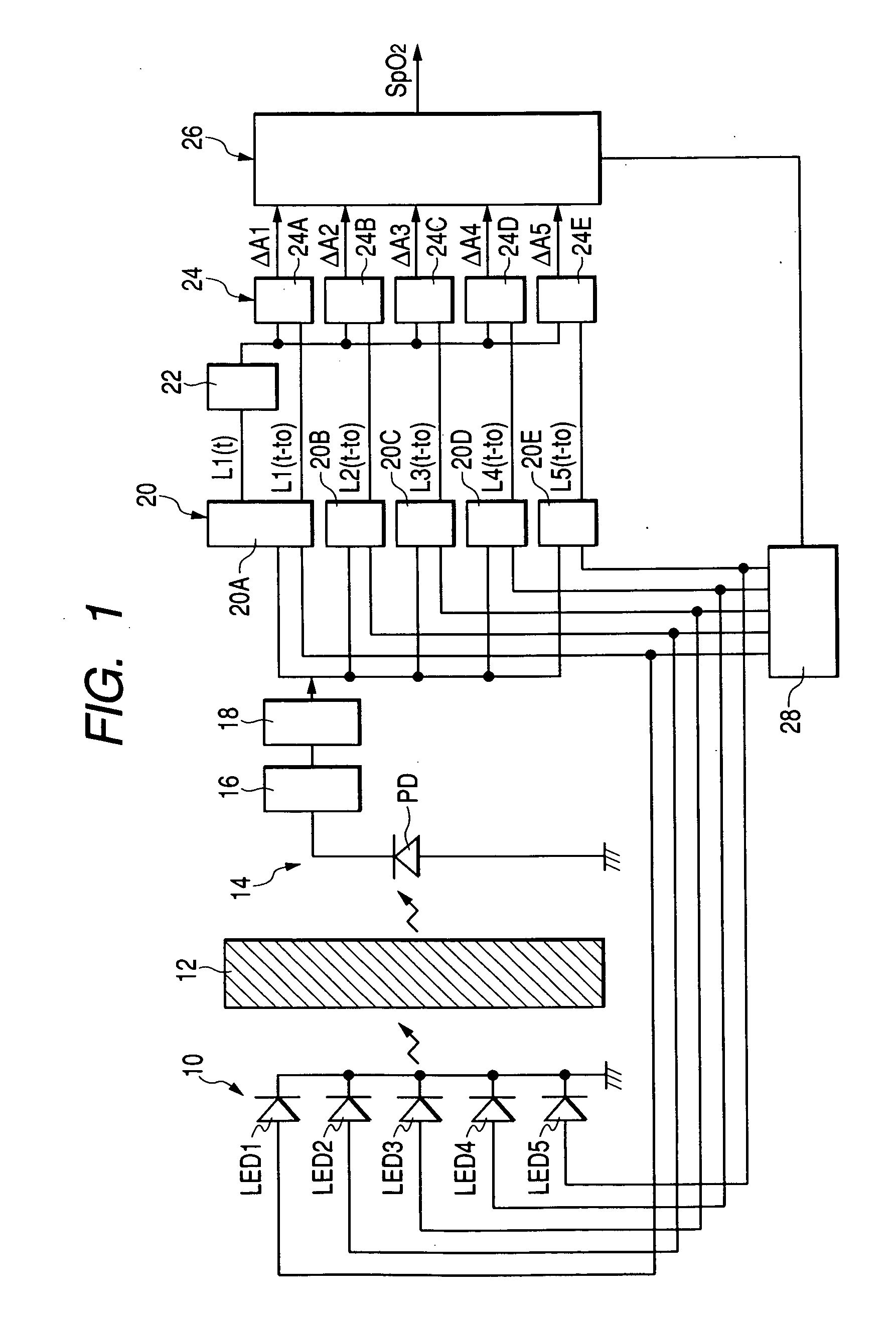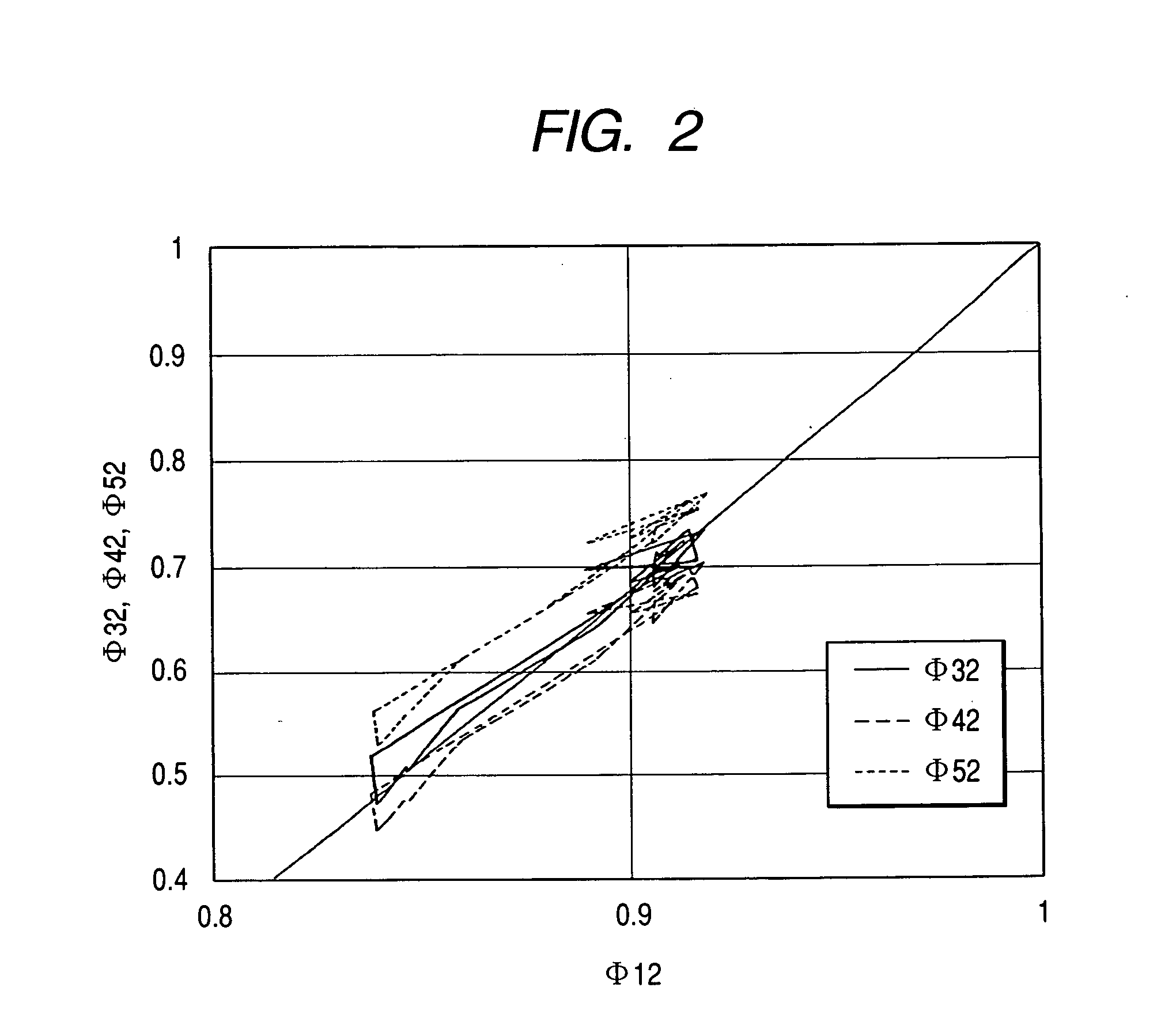Pulse oximeter
a pulse oximeter and pulse oximeter technology, applied in the field of pulse oximeters, can solve the problems of attenuation change of light transmitted through living tissue, and generate artifacts, and achieve the effect of accurate spo2 valu
- Summary
- Abstract
- Description
- Claims
- Application Information
AI Technical Summary
Benefits of technology
Problems solved by technology
Method used
Image
Examples
Embodiment Construction
One embodiment of the present invention will be described below in detail with reference to the accompanying drawings.
In a pulse oximeter shown in FIG. 1, a light emitter 10 includes five light emitting elements LED 1 to LED 5 for emitting light beams of five different wavelengths. The light beams emitted from the light emitter 10 is transmitted through a living tissue 12 and received by a light receiver 14 constituted by a light receiving element PD, a current-voltage converter 16, and an AD converter 18. The light receiver 14 outputs transmitted light signals for the respective wavelengths.
A storage 20 is formed from storage devices 20A to 20E which store the transmitted light signals of the respective wavelengths. A peak bottom detector 22 is configured to detect a peak value and a bottom value of changes in a transmitted light signal of one of the wavelengths, to thus output time points at which the peak value and the bottom value appear. A first calculator 24 is constitute...
PUM
 Login to View More
Login to View More Abstract
Description
Claims
Application Information
 Login to View More
Login to View More - R&D
- Intellectual Property
- Life Sciences
- Materials
- Tech Scout
- Unparalleled Data Quality
- Higher Quality Content
- 60% Fewer Hallucinations
Browse by: Latest US Patents, China's latest patents, Technical Efficacy Thesaurus, Application Domain, Technology Topic, Popular Technical Reports.
© 2025 PatSnap. All rights reserved.Legal|Privacy policy|Modern Slavery Act Transparency Statement|Sitemap|About US| Contact US: help@patsnap.com



